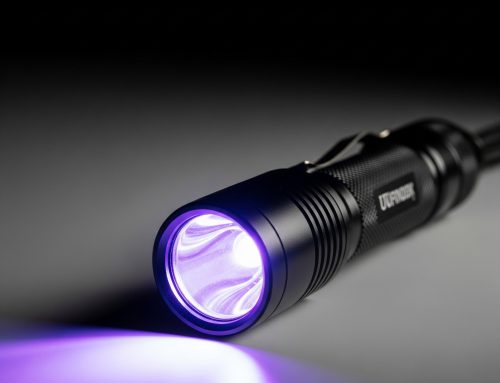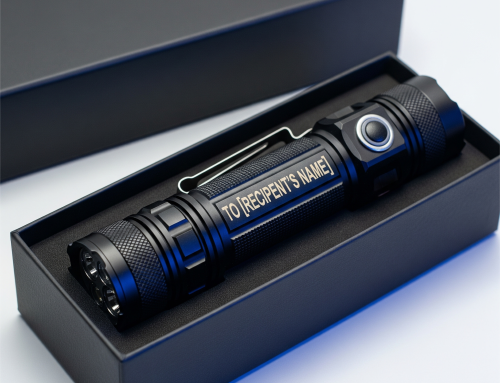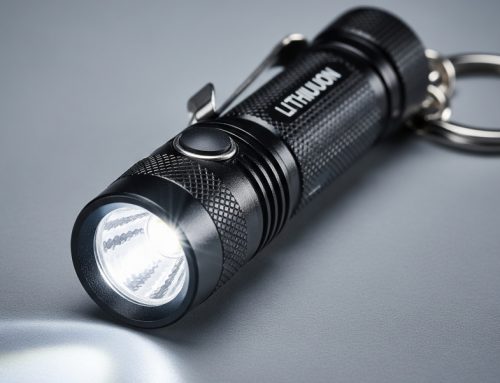Forensic investigations require a keen eye for detail and a reliance on advanced tools to uncover critical evidence. Among these tools, UV flashlights have proven to be indispensable in modern crime scene analysis. Their ability to reveal hidden evidence, such as bodily fluids, trace particles, and other forensic clues, makes them a vital resource for investigators. In this article, we will explore the importance of UV flashlights in forensic investigations and their diverse applications in solving crimes.
What is UV Light and Why is it Important for Forensics?
Ultraviolet (UV) light is a type of electromagnetic radiation with wavelengths shorter than visible light but longer than X-rays. While UV light is invisible to the naked eye, it can cause certain substances to fluoresce, or emit visible light, when exposed to it. This fluorescence reveals otherwise hidden evidence, making UV light a powerful tool for forensic experts.
UV flashlights are specifically designed to emit light at wavelengths around 365nm to 395nm, which is ideal for triggering fluorescence in substances like blood, bodily fluids, and other materials often encountered at crime scenes. By using UV flashlights, forensic investigators can detect crucial evidence that would otherwise be missed under normal lighting conditions.
Key Forensic Applications of UV Flashlights
1. Detection of Bodily Fluids
One of the primary uses of UV flashlights in forensic investigations is the detection of bodily fluids, including blood, semen, saliva, and urine. These fluids often provide critical DNA evidence that can link a suspect to a crime. While bodily fluids are typically invisible under regular lighting, they exhibit a distinct fluorescent glow when exposed to UV light.
At crime scenes, investigators use UV flashlights to locate hidden blood stains on surfaces such as carpets, bedding, or clothing. Even after cleaning efforts, blood can still be detected, helping investigators gather crucial evidence to piece together the events of the crime.
2. Identifying Trace Evidence
In forensic investigations, trace evidence such as fibers, hair, and small particles can provide significant clues about the crime and the individuals involved. However, these tiny traces are often difficult to detect with the naked eye, particularly when they are scattered across a scene or blend in with the background.
UV flashlights can cause certain fibers, hairs, and particulate matter to fluoresce, making them visible to investigators. This is especially helpful when searching for trace evidence in locations like carpets, upholstery, or vehicle interiors. Identifying fibers or hair matching a suspect’s clothing or appearance can play a key role in linking individuals to the crime scene.
3. Detecting Fingerprints
While traditional methods like fingerprint powders are commonly used to detect prints, UV flashlights can also assist in revealing latent fingerprints, especially on dark or non-porous surfaces. Some chemical treatments and fingerprint powders used in forensic analysis fluoresce under UV light, making latent prints visible.
UV flashlights are useful for uncovering prints that might otherwise go unnoticed, providing investigators with another layer of evidence to support their case. This can be particularly valuable in situations where standard fingerprint analysis methods are not effective.
4. Document Examination and Counterfeit Detection
UV flashlights are also an essential tool in examining documents for authenticity. In cases involving fraud, money laundering, or identity theft, UV light can be used to detect hidden security features on documents like passports, banknotes, and contracts.
Many legal and financial documents are designed with UV-reactive inks, watermarks, or other markings that are invisible under normal lighting. When exposed to UV light, these features become visible, allowing forensic experts to verify the authenticity of documents and uncover any signs of tampering or forgery.
5. Detecting Gunshot Residue and Explosive Traces
Gunshot residue (GSR) is a type of evidence left behind after a firearm is discharged. While GSR is typically invisible to the naked eye, it may fluoresce under UV light, providing forensic experts with an additional method for detecting this evidence.
Similarly, UV flashlights can help uncover traces of explosives or other chemicals that may be left at a crime scene. Explosive residues sometimes emit a fluorescent glow under UV light, allowing investigators to detect bomb-making materials or traces of detonated explosives.
Why UV Flashlights Are Indispensable in Forensic Science
1. Non-Invasive Evidence Detection
One of the most significant advantages of using UV flashlights in forensic investigations is that they are non-invasive. Unlike chemical testing or physical methods, UV light does not alter or damage evidence. This allows investigators to detect hidden evidence without contaminating or disturbing the scene, ensuring the integrity of the investigation.
2. High Sensitivity and Accuracy
UV flashlights are highly sensitive to specific materials, allowing forensic investigators to detect even the smallest traces of evidence. Whether it’s a speck of blood or a single fiber, UV light can reveal these materials with remarkable accuracy. This sensitivity is crucial in solving complex cases, where every small detail can be vital.
3. Portability and Convenience
Forensic investigations often take place in a variety of environments, from crime scenes to laboratories. UV flashlights are lightweight and portable, making them easy to carry between different locations. Their compact design ensures that forensic professionals can always have the right tool on hand to examine surfaces, vehicles, or even clothing for hidden evidence.
4. Time-Efficiency
In forensic work, time is often of the essence. UV flashlights allow investigators to quickly scan crime scenes, detecting hidden fluids, fibers, and other evidence in a fraction of the time it would take using traditional methods. This rapid detection allows forensic teams to collect and document evidence before it is contaminated, improving the efficiency of the investigation.
Choosing the Right UV Flashlight for Forensic Investigations
When selecting a UV flashlight for forensic use, there are a few key factors to consider:
- Wavelength: The wavelength of UV light emitted by the flashlight is crucial for detecting specific types of evidence. Flashlights with wavelengths between 365nm and 395nm are ideal for revealing bodily fluids, trace evidence, and fingerprints.
- Light Intensity: A high-intensity UV flashlight is preferred for forensic work, as it produces a strong, focused beam that enhances the visibility of fluorescence, making it easier to detect hidden evidence.
- Durability: Forensic investigations can take place in harsh conditions, so it is important to choose a UV flashlight that is durable, shock-resistant, and capable of withstanding the demands of fieldwork.
- Portability: The flashlight should be lightweight and easy to transport, allowing forensic professionals to carry it with ease during investigations.
Why Tank007 UV Flashlights are the Best Choice for Forensic Experts
At Tank007, we offer a range of high-performance UV flashlights designed for forensic investigations. Our UV flashlights are built to meet the demanding needs of forensic professionals, providing:
- Precision and Reliability: Tank007 UV flashlights deliver accurate illumination to reveal hidden evidence, ensuring that no crucial clue goes unnoticed.
- Durability and Portability: Designed to withstand tough environments, our flashlights are durable and lightweight, making them ideal for forensic experts on the move.
- High Intensity and Sensitivity: With high-intensity beams and sensitive wavelengths, our UV flashlights provide excellent performance for detecting fluids, trace evidence, and more.
Visit Tank007.com today to explore our range of UV flashlights, and enhance your forensic investigations with cutting-edge technology that helps uncover the hidden clues crucial for solving crimes. With Tank007, forensic professionals can rely on quality, performance, and precision.



